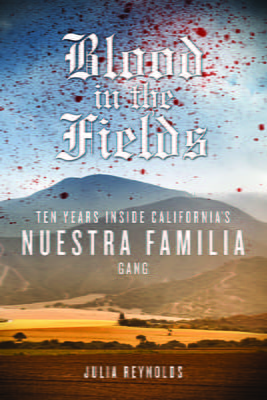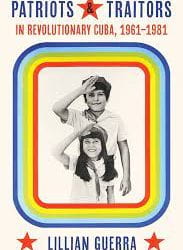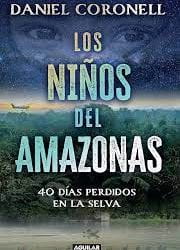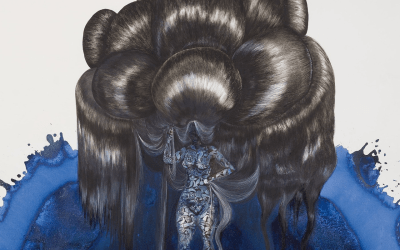A Review of Blood in the Fields: Ten Years Inside California’s Nuestra Familia Gang
Breeding Gangs

Blood in the Fields: Ten Years Inside California’s Nuestra Familia Gang By Julia Reynolds Chicago Review Press, 2014. 368 pp.
In 2003, when his son was arrested for killing a heroin dealer in Salinas, California, Armando “Big Mando” Frias did what any loving father would do: he intentionally violated his parole so police would send him to prison. There he could help protect “Lil Mando” from gang members who wanted to assassinate him, and he could enjoy time bonding with his boy, who appeared destined to wear a jumpsuit for the remainder of his life. Eventually, guards even let father and son share a cell: Lil Mando slept on the top bunk, while Big Mando wept silently for his family on the bottom. For both men, jail was an unusually familiar setting. In his teens, Big Mando had helped found Salinas East Market (SEM), one of Monterey County’s most violent Latino gangs. Consequently, he spent much of Lil Mando’s childhood locked up. The lonely son soon followed in his father’s footsteps, committing his first armed robbery when he was twelve. By twenty-two, Lil Mando had already spent half of his life incarcerated for SEM and its parent criminal organization, Nuestra Familia, i.e. Our Family.
In her debut nonfiction book, Blood in the Fields: Ten Years Inside California’s Nuestra Familia Gang, Julia Reynolds explains how Nuestra Familia (NF) uses street-level “Norteño” gangs (of which SEM is just one), to run criminal activities in small towns all over the western United States. “Wherever there’s agriculture,” she writes, “this gang seems to lurk.” If you know its members’ characteristic markings—among them, the color red, the number 14, and Nebraska Cornhuskers hats—they may be easy to detect. But real understanding requires intimacy, and the group is as welcoming to outsiders as a colony of wasps. Up-and-comers, like Lil Mando, are “schooled” in its secret history, structure, by-laws, and tactics while they serve time in YA prisons, so their criminal bonafides are beyond reproach. If boys want to make the jump from Norteño “soldier” to NF officer—and thus pave the way for promotions to “regimental commander” or “captain”—they must not only be sponsored by a current NF member: they must also kill someone for the organization, an excellent technique for weeding out undercover cops.
Obstacles like these make Blood in the Fields especially impressive and valuable. A journalist for the Monterey County Herald and coproducer of the 2006 PBS documentary “Nuestra Familia, Our Family,” Reynolds is not a particularly graceful writer. Her chopped-up story lines and hard-boiled prose read more like preparations for an HBO miniseries than like serious narrative nonfiction. But Reynolds’s reporting is extraordinary, and her book contains disturbing wisdom about why intelligent young men join these groups, why they kill for them, and what, if anything, could make them want to leave criminality’s cozy nest. It’s also a stunning account of how the federal prosecution of Nuestra Familia has inadvertently abetted its spread.
If, like me, you do a fair amount of reading about cartels, gangs, and death squads, you know that the killers in these books tend to bear a striking resemblance to sociopaths. Not so in Blood in the Fields. Though pathology lurks in the shadows, Reynolds reveals creepy organizational mechanics that marry predatory tactics with inspirational propaganda. First, Nuestra Familia seduces boys from broken homes with visions of cash, excitement, and eternal brotherhood. Then it manipulates their ethics with double talk that suggests robbery, extortion, and drug dealing are merely types of “work” that serve the noble “Cause” of protecting their communities. Consider this call for Norteño gangs to merge into a corporatized mega-gang that can monopolize the trafficking of heroin and crystal meth:
“Just as knowledge can be the key, there is strength in numbers: therefore, we Norteños can no longer continue to fight against one another. All Norteños must unite with the determination to fight and challenge all those who oppose our unity and advancement towards equal justice.”
NF’s founders pirated the civil rights language from César Chávez’s farm workers’ movement, which has nothing to do with the gang. Yet the sneaky co-optation works. Teenagers who are poor in education and hungry for accomplishment swallow the rhetoric whole, and through this cunning lens see NF membership—with its daily grind of dealing, intimidation, and assault—as a kind of chivalric code.
Eventually, the teenagers turn into fathers, whereupon Nuestra Familia presses their wives and girlfriends into functioning as illicit couriers and, in a perfect vicious circle, preys upon their young. Lil Mando is just the kind of man the original NF members dreamed of when they “encouraged members to marry within the gang to ensure their babies would grow up to be soldiers.” Or, as his father bluntly put it back when Lil Mando still needed the weakness beaten out of him: “Don’t you know you have to learn to be a killer?” In this context, armed robbery at twelve seems almost rather late.
Nuestra Familia’s generals have always run the organization from inside locked cells. The group began as a prison gang in the 1970s, spreading its tentacles (through Norteños) onto the streets only in the 1980s. By the time Reynolds began her reporting in the early 2000s, it routinely operated on instructions smuggled out of California’s highest-security prison, Pelican Bay. There, top NF brass were isolated in one-man cells for twenty-three hours a day, yet still managed to strategize NF’s dominance like a game of criminal chess: setting up a fake law firm, carefully coding fake habeas corpus petitions, and smuggling out minuscule notes to pass their orders into the outside world.
In the late 1990s and early 2000s, federal attorney Robert Mueller (later director of the FBI) tried to checkmate the group with two back-to-back investigations, both meticulously detailed in Reynolds’s book. Together the operations aimed to destroy NF by bringing down its Salinas regiment and by scattering the Pelican Bay generals across the federal prison system. Though both operations were tainted by moral lapses, Reynolds’s outrage at the blemishes feels somewhat out of place. Yes, federal agents stood by while one Norteño shot another Norteño and his girlfriend because they wanted to improve their chances at trial by catching the gang in the middle of “overt acts.” Yes, an NF turncoat drained the NF piggy bank and tried to deal crystal meth while working for the FBI. Kudos to Reynolds for unearthing such transgressions, but, given the violence and sophistication of the gang under investigation, let’s not pretend that they’re a real surprise. Especially when Reynolds’s true A-bomb is dropped with such aplomb.
Blood in the Fields builds to the scene when Lil Mando shoots his rival point blank in the head, but its most horrifying moment features a different kind of mental explosion: hardworking Detective Tony Reyes watches two NF generals in an Oakland jail and realizes that the FBI’s “Black Widow” operation has been about as effective as severing a hydra’s head. Rather than destroy the NF headquarters in Pelican Bay, the operation sprouted a second headquarters in Oakland, and then in USP Florence ADMAX prison, Colorado, home of the Unabomber. As if that weren’t enough, back in Monterey County, where the Salinas regiment was scooped up by the FBI’s initial operation, Reyes discovers that the Watsonville regiment has filled the sudden vacancy, and done Salinas one better by forging connections with a Mexican cartel.
This dispiriting coda is the fruit of Reynolds’s tremendous reporting and her residency in Monterey County. Rather than pack her bags and wrap her story when the FBI wrapped its operations, she stayed and watched what little long-term effect they had. For Lil Mando, at least, the more significant transformation sprang from Big Mando’s repentant cell-block crying. Dismayed by his son’s hopeless predicament—had he refused to shoot the NF rival, the NF would have executed him—and for his own role in putting him there, Big Mando vowed to care better for Lil Mando’s baby boy. For if children can be bred into NF soldiers, they can also make soldiers, like Lil Mando himself, decide to quit. The surest weapon against Nuestra Familia, it turns out, may be simply loving family.
Winter 2015, Volume XIV, Number 2
Marcela Valdes is an award-winning journalist who specializes in writing about Latin American literature and culture. Her work has appeared in The Nation, The New York Times, The Washington Post, and NPR.org, among other publications. In 2010, she was a Nieman Fellow at Harvard University.
Related Articles
A Review of Patriots and Traitors in Revolutionary Cuba, 1961-1981
I remember when I first heard Lillian Guerra speak: over fifteen years ago, at Brown University, about her third book, Visions of Power in Cuba: Revolution, Redemption and Resistance (1959-1971).
A Review of Los Niños del Amazonas: 40 Días Perdidos en la Selva
Los niños del Amazonas. 40 días perdidos en la selva is the first true book by Colombian journalist Daniel Coronell, whose long and impressive career speaks for itself: news director of manifold networks; recipient of prestigious recognitions such as Emmys, Peabodys and Simón Bolívar prizes; and arguably the most widely read columnist in Colombia, where he is as much admired as he is feared.
A Review of Channeling Knowledges: Water and Afro-Diasporic Spirits in Latinx and Caribbean Worlds
Water is a powerful tenet of Afro-diasporic religions that troubles academic disciplines and racial categories that define state, military and geographic borders.




